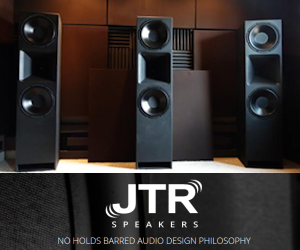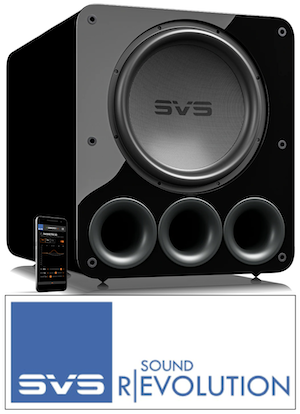Kerry,
In the graph's you showed I don't see where SPL is depicted. I'm curious as to what effect less excursion had (due to port plugging) on SPL, in that particular test.
Also, how does plugging a port compare with high passing a ported tower at say 40, 50, or 60 Hz? Isn't a port tuned by a manufacture for maximum spl at a certain frequency and then there's rolloff on each side? So if you high pass a speaker above the ports tuned frequency, what role is the port then playing, acoustically speaking?
If I were going to run a 2.2 system and high pass the towers, that would allow me to position the towers slightly closer to a wall without plugging the ports? Or could a combination of both plugging and high passing end up being best? Are there ramifications to these tweeks I'm not considering?
Disclaimer: Keep in mind I'm trying to learn and I'm possibly asking questions that don't fully make sense.
Thanks, Brian
Brian,
SPL is difficult to answer because it depends on what frequency you are looking at. In the example I showed, the input power on both the sealed and ported were the same so at frequencies below the fb of the sealed enclosure, the ported will have more max SPL output. Ports or passive radiators make a system more efficient at lower frequencies. Above the roll-off frequency of the sealed box, both systems should be identical.
However, the true answer is very complex once you start looking at a musical signal with varying frequency response. The dip in excursion for the woofer in the ported graph coincides with the port resonance. At that point, the driver is almost completely stationary, and the port is providing almost all the output. If you were to only measure at this specific frequency, the ported design would have drastically more output. But once you start looking at frequencies below the port tuning, the sealed design controls the cone better and prevents the excursion from becoming as extreme. Below the port tuning, you might only be able to send 10-20 watts to a small bookshelf woofer before it starts to distort. In addition, the excursion doesn’t just cause distortion at low frequencies, but over the entire bandwidth of operation.
The question most people are probably wondering now is why wouldn’t most ported speakers distort like crazy given what I just said. Well, most music content really likes at around 50 Hz or above and there is almost know bass outside of synthesized material below 30 Hz. So if a typical bookshelf is tuned to 50 Hz, you have low excursion centered at 50 Hz but some to each side because of the port output. This is right where a majority of bass content actually lies, so most music won’t cause the speaker to reach over-excursion at the 10-20 watts input power.
High passing, unless you are using something with controllable slopes, can be a little more difficult and usually won’t give you the same roll-off as a sealed system, especially as you get closer to the port tuning. However, you could use it in combination with a low tuned speaker to get a sealed roll-off with even less excursion than a typical sealed design. The port tuning is only affected by box size and port dimensions. High passing won’t affect the port itself but will decrease it’s overall SPL. But think about it this way, using a 12 dB slope high pass at 80 Hz just sends the speaker 12 dB less output at 40 Hz. You could have the same thing happen in music. You could have a 40 Hz tone played at 90 dB and then the next one at 80 dB with no adjustment to your volume knob. High passing with your receiver is essentially doing the same thing.
Typically, you want to high pass more to limit the excursion on a speaker than to allow you to move it closer to the wall. Remember, people still high pass sealed speakers. This is so you are sending most of the bass content to the subwoofer and your mains can get louder before they start to distort. Excursion is what causes the majority of distortion. So plugging and high passing could help but it depends on what your problem is.
I think I mentioned before, but moving a speaker closer to the wall can affect the area all the way up to about 2 kHz. High passing doesn’t fix this. Some speakers are designed with less baffle step so they can be put closer to the wall and not start to sound thick. Plugging the port can sometimes help, but it is only affecting a very limited frequency bandwidth. Depending on where the problem lies, only one of two things can really fix it: room correction or proper placement.












